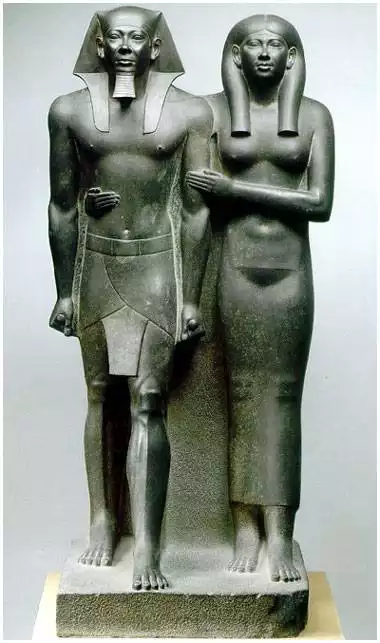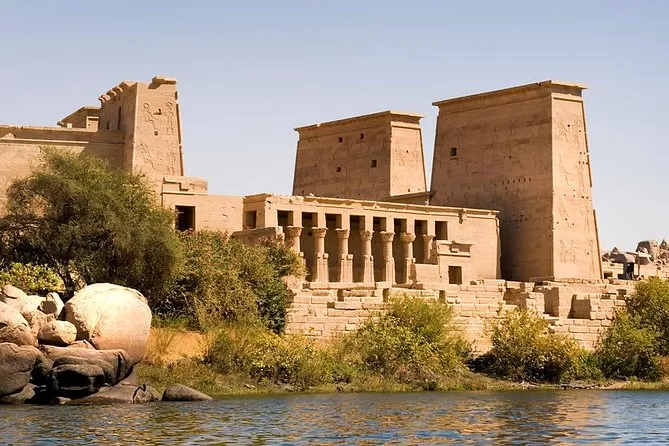Explore the Temple of Karnak - Ancient Amon Ra Shrine

While the Temple of Karnak might be the largest in the world, the site is hosted by a group of temples, including the Great Temple of Amon Ra, The Temple of Khonsu, the Temple, The Temple of Ptah, the Temple of Montho, and the Temple of the God Osiris. A 20m high mud brick enclosure
wall surrounds all of these buildings. It is as if you are walking through a city built of temples, and it is quite a fantastic feeling to stroll through them. You can feel the ancient history. It is alive as it swirls around you. This great Temple of Amon Ra was known during the Middle Kingdom period as Ipt-Swt, the Selected Spot. It was also called Pr-Imn, or the House of Amon. The name Al-Karnak in Arabic was derived from Karnak, which means fortified village, probably because the Arabs found many temples and buildings in the area when they entered it for the first time.
On your way towards the entrance, you will find a ram-headed avenue of Sphinxes built to protect the Temple. There are 20 rams on each side, extending from the small harbor to the 1st Pylon, made during King Nektanebo I (30th Dynasty). They still look down upon those who traverse the space they guard. Crossing this Pylon takes you into an open court of about 100m by 80m, built during the 22nd Dynasty and containing rows of bud papyrus columns.
The middle of the 1st open Court is a 21m high column with a bud papyrus capital. This part is known as the kiosk of Taharqa, which ruled during the 25th Dynasty. This is the only column left from an arcade that once had ten columns.
On the left side of the Court are three chapels built by King Seti II for the "Triad of Thebes." On the right side is the Temple of Ramses III, consisting of a small tower, an open court, and a Hypostyle hall leading to the Sanctuary.
Horemheb built the 2nd Pylon during the 18th Dynasty, though it is now severely damaged. Ramses I, the founder of the 19th Dynasty, later completed it. Passing the 2nd Pylon, we enter the Great Hypostyle Hall, which measures 103m in length and 52m in width. It contains 134 papyrus columns; each is about 22m in height and 3.5m in diameter. Amenhotep III built it, and Ramses I, Seti I, and Ramses II decorated it, while King Seti I erected the other 122 columns in 14 rows.
The ceiling in the center is higher than the laterals, and it allows light into this spot, which was why it was used as the processional avenue of the triad during the festival of the Opet. The scenes of the Hypostyle Hall represent King Seti I in front of different deities, making offerings. At the same time, the southern wall is decorated with scenes of Ramses II making offerings to the other gods or worshipping the Triad of Thebes.
The Hypostyle Hall leads to The 3rd Pylon, built by Amenhotep III. It is remarkable that stones from previous periods, such as the marble alabaster of Amenhotep I, were encrusted in the Pylon!
Crossing the 3rd Pylon, you come to an open, rectangular court known as the Court of Tuthmosis I. In this Court, Tuthmosis I erected two obelisks, considered the area used as the Temple's main entrance during his reign. Unfortunately, only one obelisk has survived: it is currently 19m high and around 310 tons in weight.
From the Court of Tuthmosis, we reach the 4th Pylon, which Tuthmosis I also built; beyond this is a rectangular arcade, which he made. When Hatshepsut ascended to the throne, she created two obelisks in that colonnade; the left one is still in its original position: 29.5m in height, 322 tons in weight, and made of red granite! Red granite, have you ever seen such a thing?
After the death of Queen Hatshepsut, King Tuthmosis III built a high, long wall around these two obelisks to hide them. However, some wonder, why hide them and not tear them down?
The 5th Pylon, yet again built by Tuthmosis I, is damaged on both sides of the entrance, although Tuthmosis III made two small rooms when it was his turn.
Tuthmosis III built the 6th Pylon. Beyond this Pylon, Tuthmosis III built his stunning, famous hall, the Ancestral Room. Tuthmosis III built the original Sanctuary, but Philip Arrhidaeus, the half-brother of Alexander the Great, later rebuilt it.
The granite sanctuary was dedicated to the sacred boat of Amon Ra. Behind the Sanctuary, you will see a court dating back to the time of the Middle Kingdom. It is a wide-open
the courtyard is badly damaged now. It is believed that this spot was the site of an old Temple, dating back to the time of the Middle Kingdom, the origin of the Karnak Temple.
At the end of the Middle Kingdom Courtyard is another Hall, the Akh-Mnw or the Festival Hall of Tuthmosis III. The hall in the north is called The Botanical Room. It is so beautiful, with the walls decorated with scenes of plants, animals, and birds from Syria to Egypt by the current King.
Now, we shall go back through the Temple until we reach the start again.
Left of the Court of Tuthmosis 1 ( constructed between the 4th and 3rd Pylons) is a courtyard, which is located in front of the 7th Pylon. In 1902, the French Egyptologist Georges Legrain (1865–1917) discovered a very precious collection of statues hidden in the ground of this Court, which we now know as the Court of the Cachet. The 7th Pylon, which is badly damaged, was also built by Tuthmosis III.
Crossing the 7th Pylon to the Court beyond, you will see two statues of Ramses II and Tuthmosis III.
The 8th Pylon was built by Hatshepsut, decorated by Tuthmosis III, and restored by Seti I. The scenes on the façade of the Pylon represent Hatshepsut with different deities and a religious scene featuring Tuthmosis III.
On the left side of the Court, between the 9th and 10th Pylons, are the remains of the Heb-Sed Shrine, built by Amenhotep II and decorated by Seti I.
The 9th Pylon, which Horemheb built, is badly damaged. Many bricks were found inside, used as the Pylon's filling. They belonged to the Aton Temple, built by Amenhotep VI (Akhenaten) in the 18th Dynasty and destroyed by later kings who wanted to eliminate all traces of the "heretic" King.
Finally, we reach the 10th Pylon, damaged and again built by King Horemheb. In front of this Pylon are the remains of an avenue of Sphinxes, built by Horemheb, and extending to the gate of Ptolemy II in front of Mut Temple.
Before leaving the Temple of Amon Ra at Karnak Egypt, you must visit the Sacred Lake, which returns to Tuthmosis III. It measures 80m in length and 40m in width. Near the Sacred Lake is a scarab, considered the biggest scarab left from Ancient Egypt, dating from the reign of Amenhotep III. The Ancient Egyptians called the scarab Khebry, and it was the symbol of the Sun God. The word itself means to create; it was thought to bring to the sun in the early morning. Can you imagine stepping out and looking over the lake as you drink a cup of coffee and watch the sunrise?
While in Luxor, we suggest you attend the marvelous Sound and Light show at the Temple of Karnak.
Listed below, you will find the Sound and Light show schedule.
|
Show |
First show |
Third show |
Fourth show |
||
|
Day/time |
8:30 PM |
9:30 |
|||
|
Saturday |
French |
English |
Italian |
||
|
Sunday |
German |
English |
Italian |
||
|
Monday |
English |
French |
Spanish |
||
|
Tuesday |
Japanese |
English |
|||
|
Wednesday |
German |
English |
French |
||
|
Thursday |
English |
French |
|||
|
Friday |
English |
French |
|||
|
Ticket fees |
620EGP |
630 EGP |
620 EGP |
here are al ink to their website http://www.soundandlight.show/














